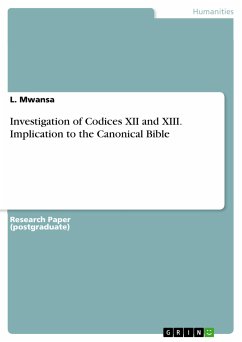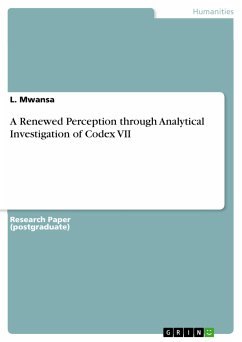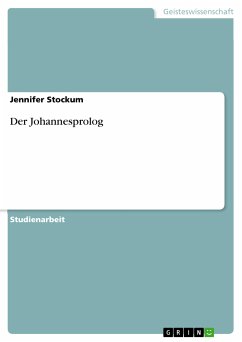Research Paper (postgraduate) from the year 2023 in the subject Theology - Biblical Theology, grade: A, , language: English, abstract: In my essay is an attempt to have an in depth analysis of correlation between codices IX and X with the New Testament. According to James Robinson in his book "The Coptic Gnostic Library Volume V", Codices IX and X are part of a composition of twelve papyrus codices, plus one treatise from a thirteenth, discovered in December of 1945, about 10 km. northeast of Nag Hammadi, in a jar buried at the base of the Gebel et-Tarif near the village of Hamra Dom in Upper Egypt. Codex IX on one hand has been numbered VIII in 1949 by J. Doresse and T. Mina, in 1950 number X by H. C. Puech, in 1958 numbered IV by S. Giversen and by B.van Regemorter in 1960, in 1958 number V by J. Doresse , and in 1962 numbered IX by M. Krause, this numbering by Krause of the Nag Hammadi codices is accepted as the official numbering and is used by the Coptic Museum and in the Facsimile Edition, and is therefore adopted in this edition. Codex IX was found with its leather cover intact and photographs of the cover are shown in the Facsimile Edition, plates 1 to 4. A full specification of the cover, which was made of sheepskin and goatskin, is given by J. M. Robinson in his foreword to the Facsimile Edition. Robinson has demonstrated, in a thorough analysis of all of the leather covers of the Nag Hammadi Library in existence, that Codex IX, typologically is in a the same class with Codices VI and X, and II, to a lesser extent. The codex is very poorly kept. Substantial portions of it are not there altogether or kept only in fragments. As is the case with the other codices in the library with the exception of Codex I, the study of the extant material has shown that the codex was composed of a single quire. From pp 27 to 48, this inside portion of the codex is comparatively well kept. The inside fragment was reinstated to its archetype sheet in the final conservation of Codex IX in 1974; the Facsimile Edition, p 41. It is obvious that fragments cannot be placed as in a jig-saw puzzle since so much of the codex is lost and damaged as such a certain criteria has been prepared for placement of fragments and for establishing the sequence of pages.
Dieser Download kann aus rechtlichen Gründen nur mit Rechnungsadresse in A, B, BG, CY, CZ, D, DK, EW, E, FIN, F, GR, HR, H, IRL, I, LT, L, LR, M, NL, PL, P, R, S, SLO, SK ausgeliefert werden.









